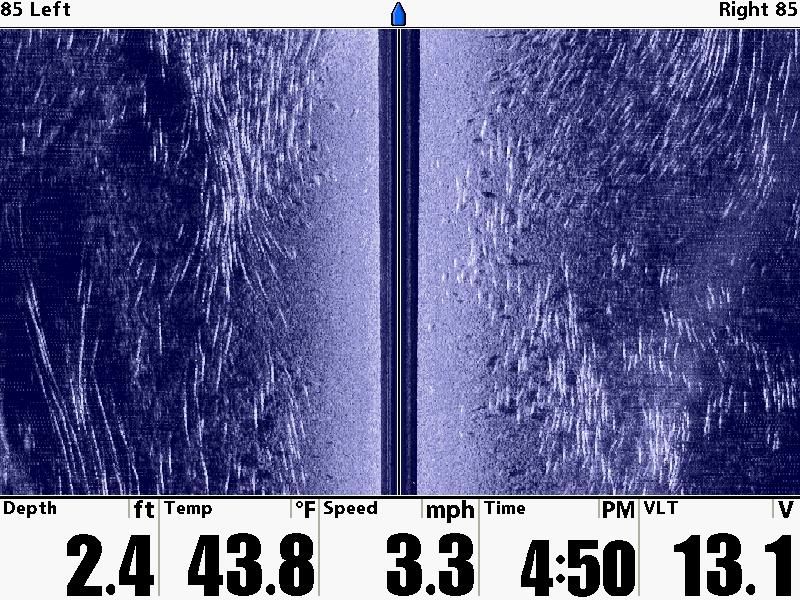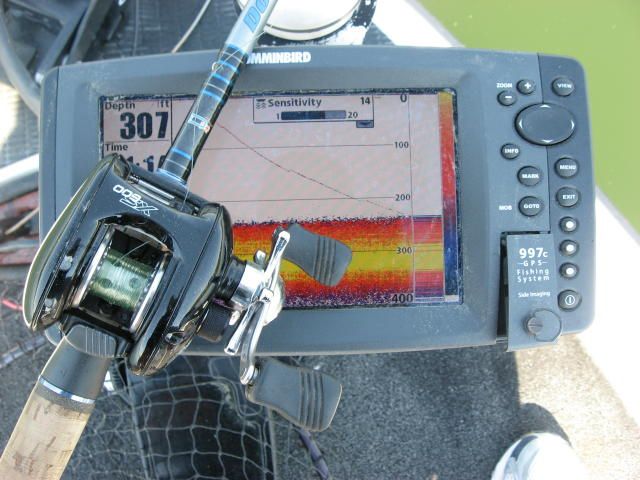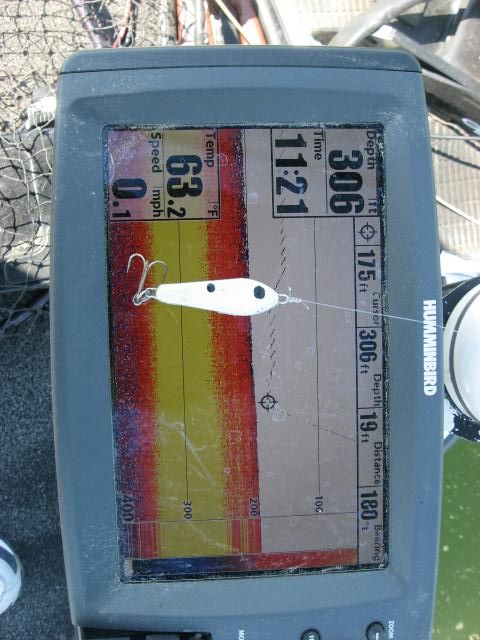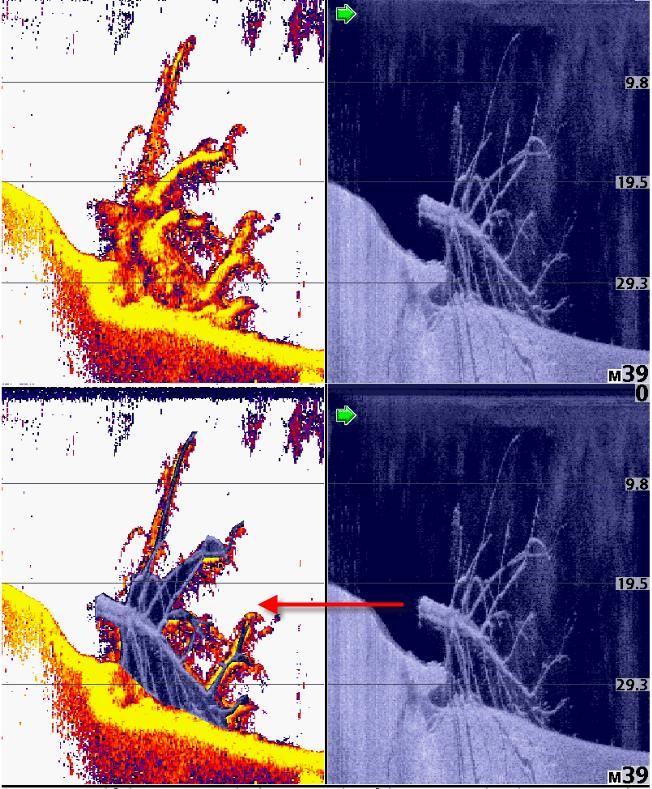Triton Mike
Senior Member
I figured I'd try and confuse some people on Side Imaging/Down Imaging since there is some learning interest in the technology. 
There is some confusion about the need to be moving 3 to 6 mph to get a clear picture on SI and DI. I wanted to share some pics. For deciphering fish you really don't need to be moving at all. Now deciphering cover/structure/ you do need to be moving 3 to 6mph to get a "clear" picture. These pics are of fish (white dashes/lines) using the 3 way screen on a 997SI that is mounted on my trolling motor. Take note of the speed in the bottom left hand corner.. Some of the pics you will see my spoon going up and down.
1
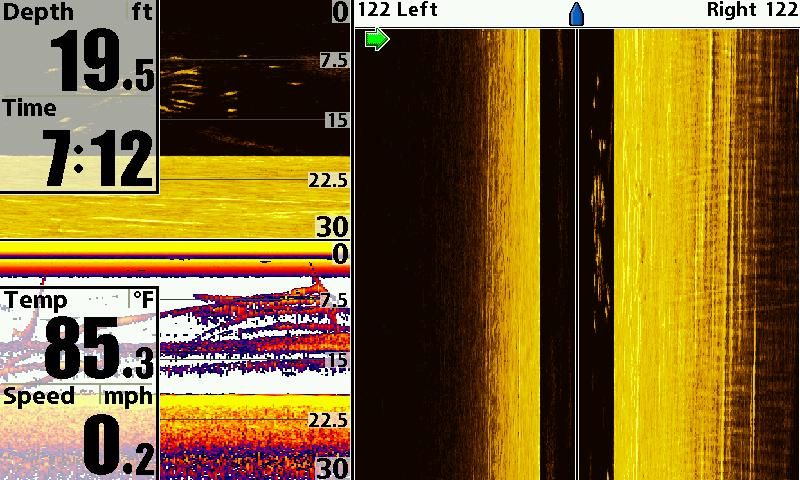
2
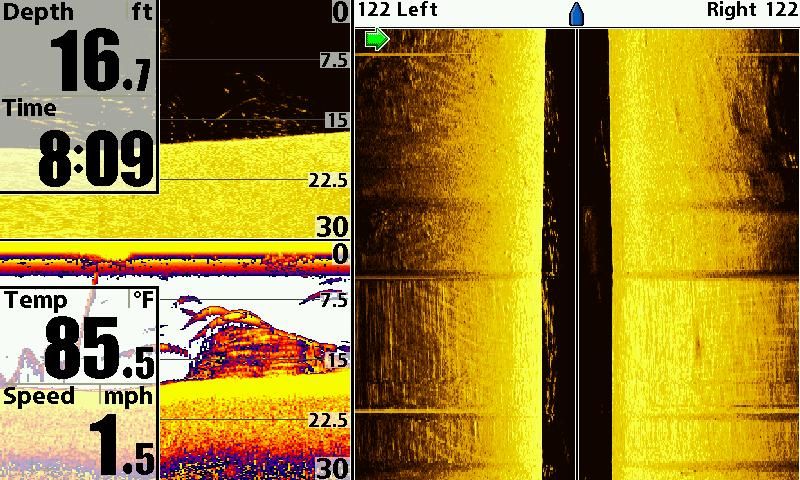
3
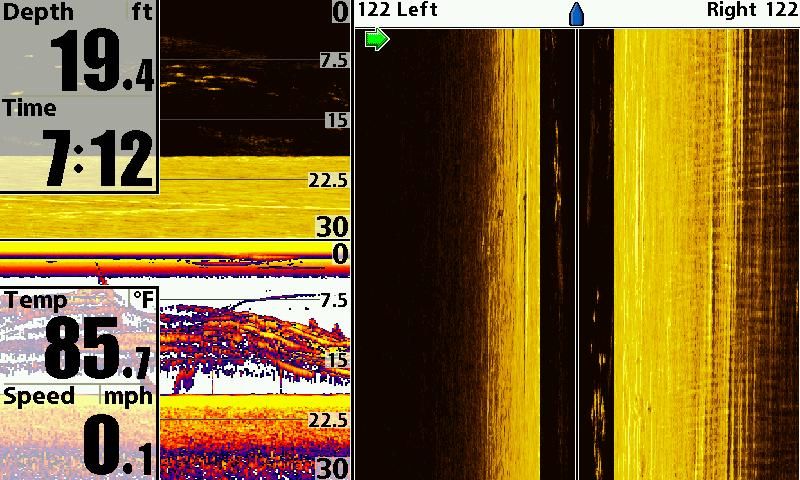
4
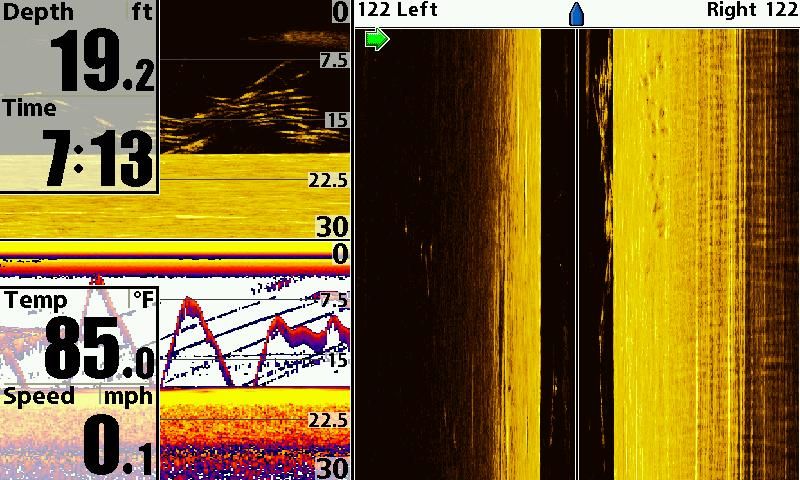
5
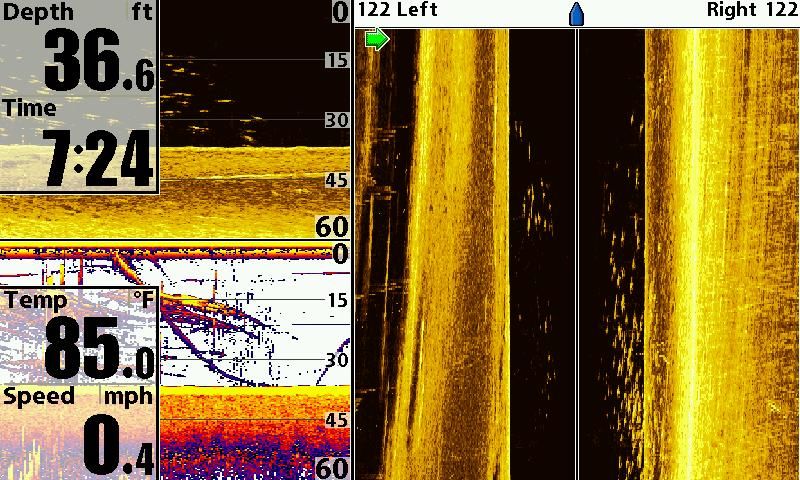
6
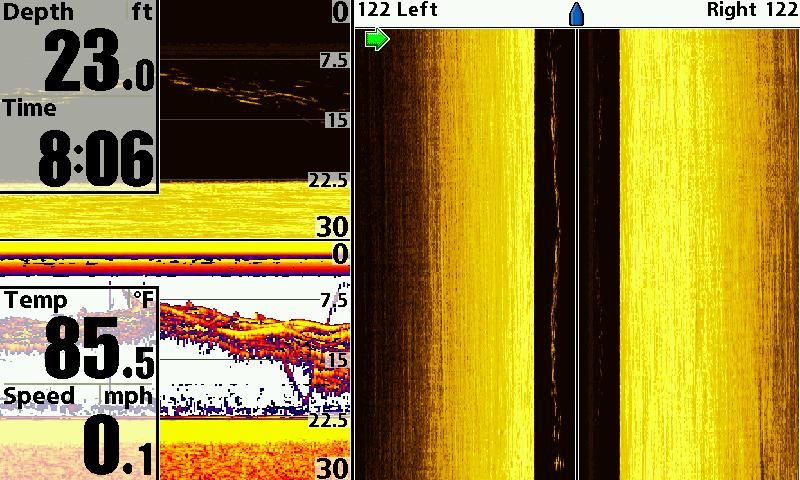
7
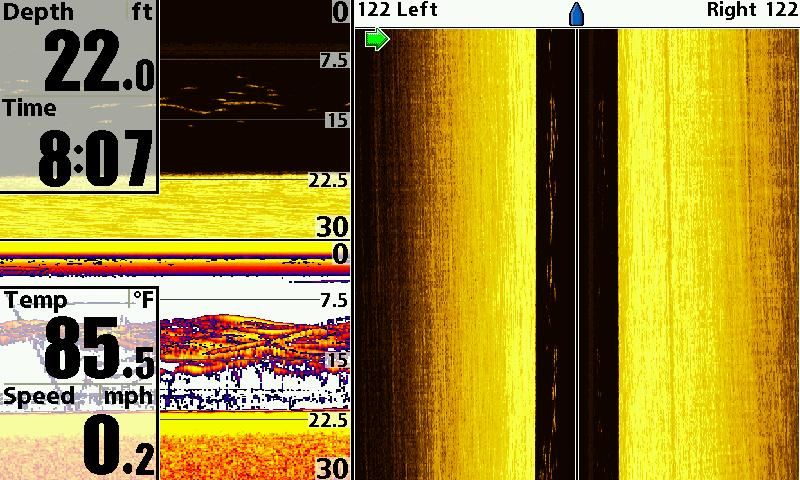
8

Having said that I am finding the DI to be very useful in deeper water situations. Primarily because the DI (wide beam) has a wider coverage AREA than the dual 200/83 beam. Preferably, I like to get as much INFORMATION as possible. Granted you can't see your spoon with DI but I am using this 3 way screen alot when spoon fishing. I can find out exactly what side of the boat the fish are on that are just out of range of sonar beams AND I can see what is out on the perimeter of the DI beams using the SI and also what depth the fish are holding at. Granted you can't get an accurate depth perception using SI as much as you can with DI and Sonar as a spoon in the vicinity of fish is better than a spoon nowhere near a fish.
I have found it to be Very very useful if your a spoon head or a dropshot guy in deep water situations. As soon as information comes up on the screen a short pitch in the general direction of the fish has gotten me many many many hookups. This is one of MANY applications where SI on the T motor can be useful.
Also Take a good look at pic #4. I can see the fish on DI but not sonar. This is a prime example of the advantages of the 3 way screen and taking advantage of the wider beam of DI. Also if you are having trouble deciphering fish on your sonar due to not knowing the basics of how to tune your sonar, DI pics up fish almost automatic and there's no question about what you are seeing on your screen. Hope this is helpful to some and explains the usages of the technology. If I can help anyone let me know.
Mike

There is some confusion about the need to be moving 3 to 6 mph to get a clear picture on SI and DI. I wanted to share some pics. For deciphering fish you really don't need to be moving at all. Now deciphering cover/structure/ you do need to be moving 3 to 6mph to get a "clear" picture. These pics are of fish (white dashes/lines) using the 3 way screen on a 997SI that is mounted on my trolling motor. Take note of the speed in the bottom left hand corner.. Some of the pics you will see my spoon going up and down.
1

2

3

4

5

6

7

8

Having said that I am finding the DI to be very useful in deeper water situations. Primarily because the DI (wide beam) has a wider coverage AREA than the dual 200/83 beam. Preferably, I like to get as much INFORMATION as possible. Granted you can't see your spoon with DI but I am using this 3 way screen alot when spoon fishing. I can find out exactly what side of the boat the fish are on that are just out of range of sonar beams AND I can see what is out on the perimeter of the DI beams using the SI and also what depth the fish are holding at. Granted you can't get an accurate depth perception using SI as much as you can with DI and Sonar as a spoon in the vicinity of fish is better than a spoon nowhere near a fish.
I have found it to be Very very useful if your a spoon head or a dropshot guy in deep water situations. As soon as information comes up on the screen a short pitch in the general direction of the fish has gotten me many many many hookups. This is one of MANY applications where SI on the T motor can be useful.
Also Take a good look at pic #4. I can see the fish on DI but not sonar. This is a prime example of the advantages of the 3 way screen and taking advantage of the wider beam of DI. Also if you are having trouble deciphering fish on your sonar due to not knowing the basics of how to tune your sonar, DI pics up fish almost automatic and there's no question about what you are seeing on your screen. Hope this is helpful to some and explains the usages of the technology. If I can help anyone let me know.
Mike

